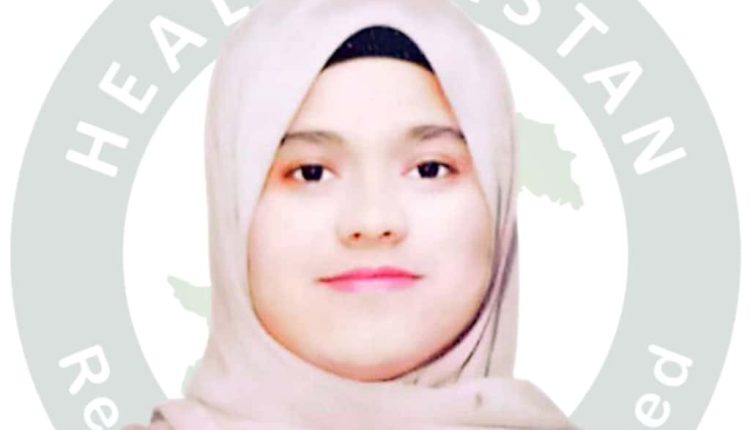by Wajiha Arshad
October 27, 1947, stands as one of the darkest chapters in the history of Indian Illegally Occupied Jammu and Kashmir. On this day, Indian troops entered Srinagar under the pretext of protection, but their arrival marked the beginning of a brutal military occupation that continues even after seventy-eight years. What was portrayed as a political necessity soon turned into a campaign of subjugation. Maharaja Hari Singh’s so-called Instrument of Accession was signed against the will of the Muslim-majority population, and within days, Indian forces unleashed terror across the region. The entry of Indian troops was not merely a political move, it set off a wave of violence that soon spread beyond Srinagar. What began as an occupation in the Valley quickly turned into a blood-soaked campaign in Jammu, aimed at crushing Muslim resistance and reshaping the region’s demography.
In the weeks that followed the Indian invasion, Kashmir witnessed one of the most horrific chapters in its history, the Jammu Massacre. Between October and November 1947, over 200,000 Muslims were systematically killed, and nearly 500,000 were forced to flee their homes to what later became Pakistan. Entire villages were wiped out, convoys of fleeing families were ambushed, and women were abducted or disappeared without a trace. Trains packed with Muslim refugees leaving Jammu arrived in Sialkot soaked in blood, not a single passenger alive. This was not random chaos; it was a campaign of communal cleansing, planned to alter the region’s demography before the world could intervene. The massacre of Jammu remains one of South Asia’s darkest silences, a crime buried beneath political narratives, but never forgotten by those who survived it. For Kashmiris, 27 October 1947 was not just the beginning of military occupation; it was the start of an existential assault on their lives, their land, and their identity. The soil of Jammu still bears witness to that horror, reminding the world that justice delayed for Kashmir is humanity denied.
The promise of a UN-mandated plebiscite, made in 1948 and reaffirmed in 1949, was never fulfilled. Instead, the people of Kashmir have endured an unending siege, marked by killings, enforced disappearances, torture, sexual violence, and collective punishment. Human rights organizations, including Amnesty International and Human Rights Watch, estimate that since 1947, nearly 70,000 lives have been lost due to systematic state violence.
Since 1947, Kashmir has been the most militarized region where about 900,000 troops are deployed, including the CPRF and the BSA. In this region, the military presence even increased after the abrogation of Article 370, when Kashmir’s semi-autonomous system was revoked. Tens of thousands more troops were deployed there, and there were curfews, resulting in the shortages of internet faced by Kashmiris. A special Act, the Armed Forces (special powers) Act, has been in force since 1958 in Jammu and Kashmir, active since 1990. This act allows soldiers of India to shoot civilians and arrest them without a warrant. Minar Pimple, Senior Director of Global Operations at Amnesty International, said that till now, not a single member of the security forces has been tried for human rights violations in a civilian court. This lack of accountability has, in turn, facilitated other serious abuses. (India: Accountability still missing for human rights violations in Jammu and Kashmir, 2015)
The Indian Government not only deployed forces in Indian Illegally Occupied Kashmir but also employed the use of psychological warfare to instill fear. With many shutdowns of the internet in 2023 alone, 84 shutdowns, with 49 only in Indian Illegally Occupied Jammu and Kashmir. According to the Digital Rights Watchdog, India is using internet shutdown to maintain its control in the region. The other psychological weapon that the Government uses is Curfew. In 2022, a string of 16 back-to-back orders for three-day-long curfew shutdowns was given in January and February 2022. In 2019, the BJP government imposed the worst policies in the region to marginalize and oppress the Muslim Majority population in Kashmir. Shutting down the internet in IIOJK also negatively impacts the economy by targeting trade and commerce, hence hindering the entire process. (In 2022, the world faced 187 internet shutdowns- 84 by India alone, 2023).
The government has also put collective restrictions on movements in 2019. After the revocation of articles 370 and 35A, there was a complete blackout, curfews, and restrictions on movements. The UN condemned these actions and labelled them as collective punishment. There were night raids, and forced displacements were faced by local areas like Poonch and Shopian. These actions taken by the government led to the disruption of education and healthcare. People of IIOJK have been deprived of their fundamental rights and are practically being controlled by the Indian military. (Kashmir communications shutdown a ‘collective punishment’ that must be reversed, say UN experts, 2019)
India has been doing demographic reconfiguration in IIOJK to change the Muslim Majority level. After the revocation of Article 370 and Article 35A, the Indian Government has introduced a new Domicile law under which non-Kashmiris can now own land in Kashmir if they’ve lived in Kashmir for 15 years or if one of their parent is from Kashmir. Before this, non-Kashmiris couldn’t buy land in Kashmir. In April 2025, about 3.5 million domiciles were given to Indians and 83,742 to those who weren’t even qualified for the domicile. In 2020, people could buy land in Kashmir; many Kashmiri leaders portrayed this move as a settler project.
The Kashmiris continue to resist the Indian government’s military presence and control in the form of psychological governance and violation of fundamental rights through resilience. Kashmiris still find ways to resist them peacefully through culture, art, literature and their Music because they are a nation which never gave up.
The writer is a student of BS International Relations at Kinnaird College for Women, Lahore and is currently serving as an intern at HEAL Pakistan in collaboration with the Kashmir Institute of International Relations KIIR. She can be reached at wajihaaa122@gmail.coman

